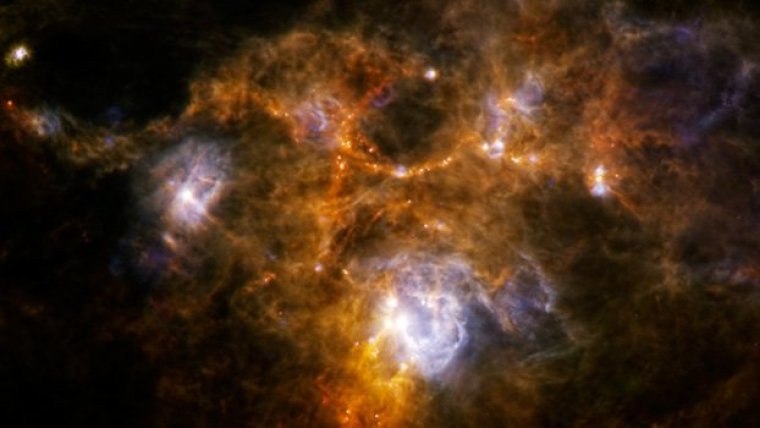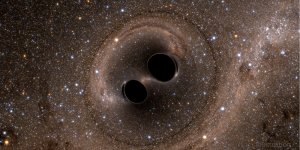| News / Science News |
Herschel sees budding stars and a giant, strange ring
NASA | JUNE 14, 2014
The Herschel Space Observatory has uncovered a weird ring of dusty material while obtaining one of the sharpest scans to date of a huge cloud of gas and dust, called NGC 7538. The observations have revealed numerous clumps of material, a baker's dozen of which may evolve into the most powerful kinds of stars in the universe.

The Herschel Space Observatory has uncovered a weird ring of dusty material while obtaining one of the sharpest scans to date of a huge cloud of gas and dust, called NGC 7538. Image credit: ESA/NASA/JPL-Caltech/Whitman College
NGC 7538 is relatively nearby, at a distance of about 8,800 light-years and located in the constellation Cepheus. The cloud, which has a mass on the order of 400,000 suns, is undergoing an intense bout of star formation.
Astronomers study stellar nurseries such as NGC 7538 to better learn how stars come into being. Finding the mysterious ring, in this case, came as an unexpected bonus.
The cool, dusty ring has an oval shape, with its long axis spanning about 35 light-years and its short axis about 25 light-years. The ring possesses the mass of 500 suns. Astronomers often see ring and bubble-like structures in cosmic dust clouds.
The strong winds cast out by the most massive stars, called O-type stars, can generate these expanding puffs, as can their explosive deaths as supernovas. But no energetic source or remnant of a deceased O-type star, such as a neutron star, is apparent within the center of this ring. It is possible that a big star blew the bubble and, because stars are all in motion, subsequently left the scene, escaping detection.
Stars of this caliber form from gassy, dusty clumps with initial masses dozens of times greater than the sun's; the 13 clumps spotted in NGC 7358, some of which lie along the edge of the mystery ring, all are more than 40 times more massive than the sun. The clumps gravitationally collapse in on themselves, growing denser and hotter in their cores until nuclear fusion ignites and a star is born.
For now, early in the star-formation process, the clumps remain quite cold, just a few tens of degrees above absolute zero. At these temperatures, the clumps emit the bulk of their radiation in the low-energy, submillimeter and infrared light that Herschel was specifically designed to detect.
YOU MAY ALSO LIKE



